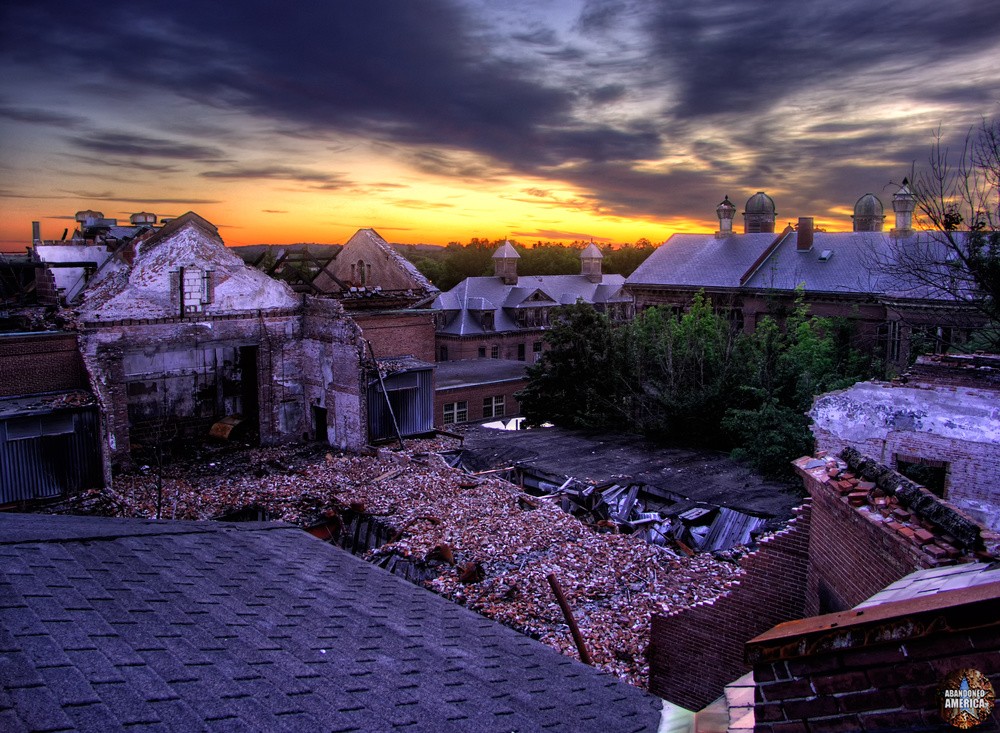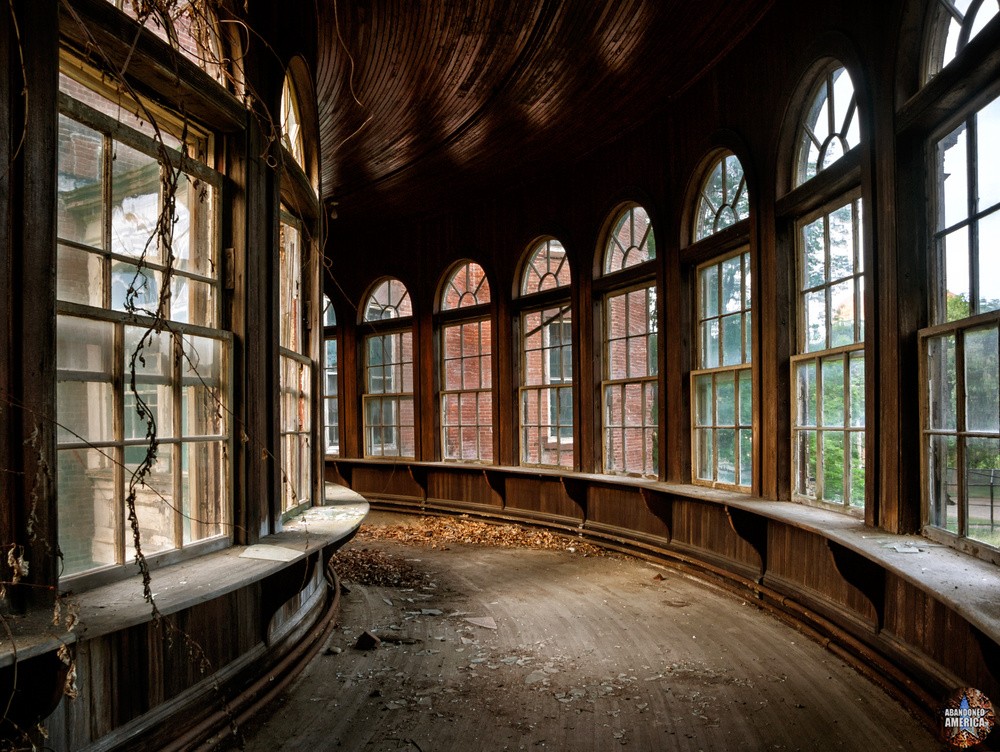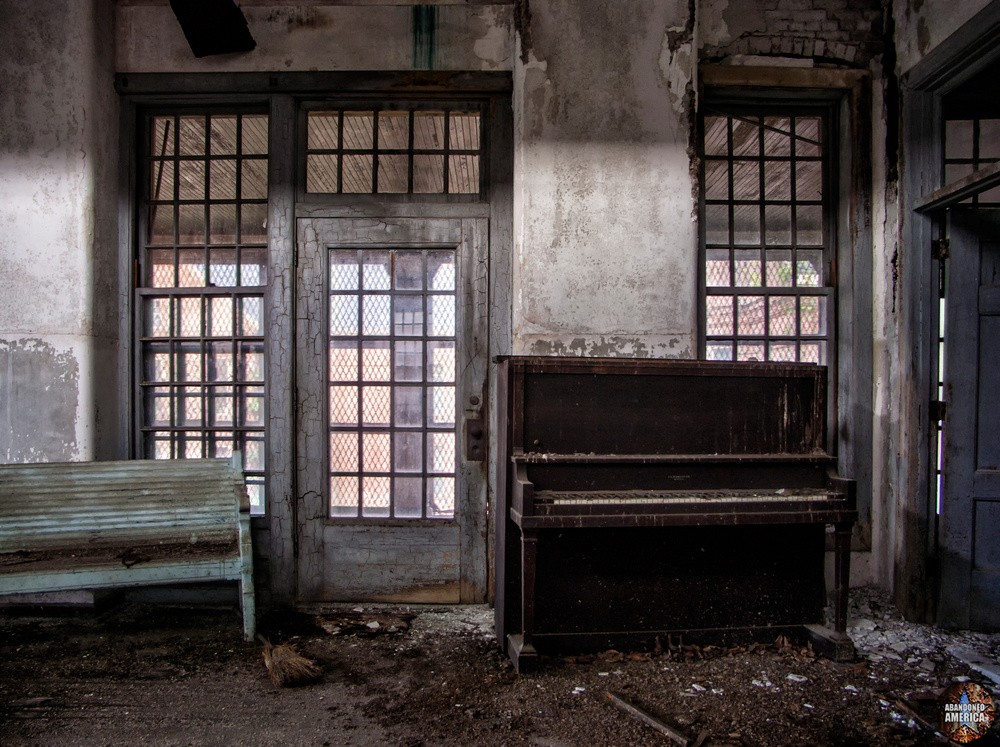During my photography career, one of the most challenging and hazardous assignments I had was taking pictures at Taunton State Hospital. With hindsight, it appears that it had to have been a dream. I have the proof that something that amazing could not have happened. Similar to the asylum itself, the realities are difficult to accept, yet they are nonetheless unavoidable.
Ryan, the guy who had volunteered to show me about Taunton, was someone I hardly knew. It had been very easy to enter the closed-off area of Taunton State Hospital years before—you could just stroll right in! That was altered in 2006 by a five-alarm fire that damaged much of the hospital’s administrative building. The state of Massachusetts installed motion-activated cameras and erected a fifteen-foot fence around the perimeter. The Department of Mental Health Police often patrolled the site because some of the other areas were still in use. Their determination to keep people out was sincere.
It had seemed like a big adventure when Ryan had agreed to let me go with him, but when I got to his place at two in the morning to make it there by four, it appeared like maybe it had not been the best idea. I began to question whether I had made a grave error when a bunch of late-teenagers from Long Island came, none of whom I knew. The Long Island group appeared to be more of a liability than anything; they were gregarious yet boisterous.

A view of the campus of Taunton State Hospital in 2008.
It looked too high to climb when we got to the barrier, which curled outward at the top to deter intrusion. At one gate, Ryan and a friend helped me up as the footholds were a little better. Before I could even understand that it had happened, I was scurrying around furiously for a little while and then making my way down the other side and into the relative safety of a neighboring bush. Before long, the others had also arrived, and we sprinted across the lawn in search of an open door. It was thrilling and horrifying all at once.
Ryan led us through a confusing network of passageways that I was unable to navigate, as well as the still-dark wards. We were soon in an attic and climbing a ladder to the roof. It looked as though the shingles you stood on would collapse under your feet because the steep slate offered hardly no traction at all. I resumed my habit of forgoing safety in favor of photos even though I didn’t want to go upon it or miss the sunrise from the rooftop.
The sun rose over the charred remnants of what had once been the theater and cafeteria as we sat at the base of a cupola with the names of the original builders engraved on the wood inside. That was undoubtedly one of those pivotal moments whose magic could never be replicated in any media. I couldn’t really explain why, but it felt like everything I had ever done had happened to get me to that point.

A view of the ruins of Taunton State Hospital’s auditorium from the rooftop at sunrise
The second facility of its kind in Massachusetts was Taunton State Hospital, which was formerly known as the State Lunatic Hospital at Taunton. Constructed for $151,742.48 in 1853, it replaced the State Lunatic Hospital at Worchester, which was already dangerously overcrowded after being established 20 years earlier. There were other municipalities contending for the hospital, including Taunton. Part of the reason the 154 acres near Taunton’s Mill River were chosen was that the river served as a natural buffer between the asylum and the town’s continued expansion.Elbridge Boyden, a well-known architect from New England with a long history of creating public buildings like courts, jails, post offices, and train stations, was chosen to design the hospital. It was constructed in the Georgian style, with the cornices, capitals, and cupolas—including the one I would be standing atop a century and a half later—showcasing Boyden’s trademark use of ornamental cast iron.
Eventually, there would be over forty structures, with parlors, open-air verandas, dining rooms and kitchens, chapel, laundry, theater, and staff dormitories. Modern conveniences including central heating, air conditioning, running water, and a sewage system were available at the Taunton State Lunatic Hospital. It was the fifth state hospital to be constructed using Dr. Thomas Story Kirkbride’s standard design for asylums, which had expansive wings extending from a central administrative building in an arrangement intended to maximize natural light and ventilation for every ward.
The grounds were to “render it a spot fitted to interest and tranquilize the minds of those who need as well as the soothing influences of external nature as the healing remedies of art,” and the structure itself was meant to have therapeutic properties. The three-story administrative building featured a dome that rose 70 feet above the roof, offering a breathtaking view that stretched all the way to the blue hills of Norfolk Country, several thriving villages, the neighboring town with its many signs of a busy life, and ponds and streams.One of the first elements to be removed following the hospital’s closure was this dome, which fell into the main hospital building in 1999 due to its own weight after being abandoned for almost 25 years.

Taunton State Hospital’s cirved hallways were one of its most memorable and beautiful features.
A “lunatic hospital” is hardly a place most people would have wanted to visit, even with these noble intentions. A guy named David Hurley attempted to jump off a train carrying him to Taunton in 1869, losing both of his legs in the process. He passed away 30 minutes later. Even while many received treatment and were eventually released, there was always a chance that one would be detained for years or perhaps the rest of their life, and this carried a heavy stigma.

One of Taunton State Hospital’s rotting day rooms, at the end of a wing where the most ill patients were kept
Following the turn of the 20th century, eugenics philosophy seeped into the scientific and medical establishment, and state hospitals gradually turned into storage facilities for people who were perceived as inferior. The fundamental tenet of eugenics was that groups such as minorities, the impoverished, criminals, and those suffering from mental illness or physical/cognitive impairments were proliferating at an alarming pace and were passing on their faulty genes to their offspring.Studies revealed that the wealthy white upper class was more likely to marry later and have fewer children than other castes. This led to fears that the number of undesirables would rise, which ultimately led to Hitler’s Final Solution. Eugenics ideology gained a lot of traction in American public hospitals, causing a shift in focus from patient care to the kind of careless neglect that would eventually destroy the hospital and force it to close.Governor James Curley of Massachusetts fiercely criticized the filthy surroundings, congestion, and disregard at Taunton in 1936. He was cited as saying, “Some of the wards I visited were horrible places to put animals in, let alone human beings.” “It has been reported that three people will alternate one nightgown in a 24-hour period.”

A wooden bowling game left behind in one of Taunton’s abandoned wards
Taunton had been deserted for my entire childhood when I visited a little over thirty years after the main hospital closed. Much of the major administration building had already been destroyed by fire, but what was remained was absolutely magnificent. Unquestionably, remnants of life on the wards demonstrated that the history of Taunton State Hospital was real and the people who had passed through its doors were far more than just stories.Six persons brave enough to break into the building that day were the only occupants of a place where thousands of people had once lived and worked. Previously, individuals imprisoned there had tried to break free. It was frightening not because of the macabre spirits of ghost stories, but rather because this incredible institution, the generations of people who had built it, and the care philosophy that made it what it was were all quickly fading into the past.It was palpable in the places where the floor was sinking into the ground, in the strange paradox of huge holes where people used to be. Taunton’s current state was a strange tug-of-war between all that it used to be and all that it was going to become.

Floor collapses were not uncommon in Taunton; ones like this indicate that they probably happened suddenly as the joists gave out.
It was getting close to the end of the day when things really became busy. I had no idea what had happened (had someone spotted a policeman just beyond a window, perhaps? ), but all of a sudden we were chasing after Ryan, making our way deeper into the building’s interior and basement, past outdated wheelchairs and pipes, and eventually arriving at a narrow tunnel that was too small to stand in. We stood there for what felt like an eternity, while Ryan shushed the one noisy kid from Long Island who was able to keep up and periodically checked on us from a grate above.We had no idea if they had noticed us, if they were pursuing us, or if they had taken any prisoners. After a while of excruciating pain from stooping over a bulky bag of photography gear, Ryan called it quits. We found a doorway, raced to the fence as quickly as we could, and climbed over. Returning to a country where we wouldn’t be detained merely for being was a huge relief.